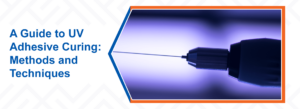7 Tips To Choose Epoxy For Optical Applications
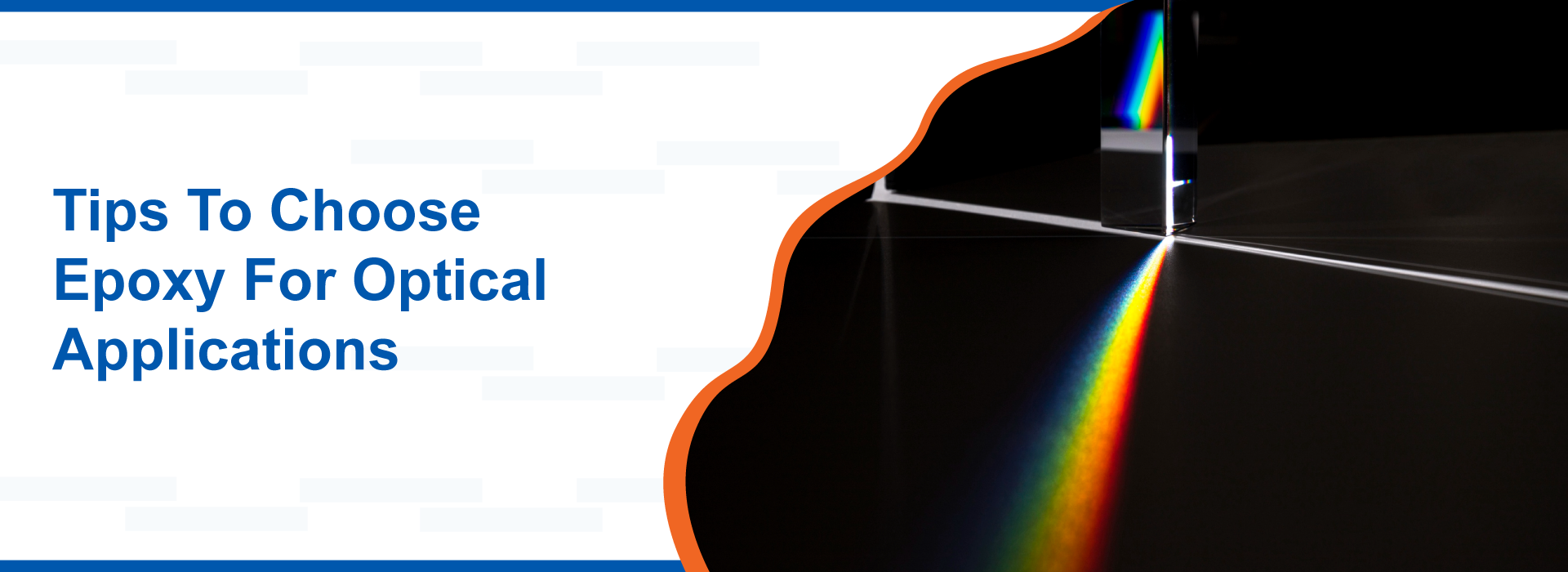
As adhesive technology has evolved over the years, there have been several variations of optical epoxy. As a result, selecting the right epoxy adhesive for your specific application can be a bit tough. Optical adhesives are used in a number of applications, from coating and encapsulating fibre optics to optoelectronics and optomechanics.
As epoxies can be tailored to have a wide range of properties, It is crucial to choose an adhesive with the desired properties. In this blog, we will go over 7 factors that you should consider when choosing an epoxy for optical applications. Continue reading to stay updated and make informed decisions while choosing optical epoxy.
A] What Are Optical Epoxy Adhesives
Optical epoxies are specialised adhesives with optical properties. Most of these adhesives are transparent but can have several other properties as well, such as non-yellowing, refraction, thermal and electrical conductivity or resistance, and chemical resistance. Optical epoxies are generally used to bond metal, glass, and plastic substrates which need optical properties.
The most common applications of optical adhesives include LEDs, display of mobile phones, tabs, PCs, and laptops, cameras, fibre optics, and laser devices such as barcode scanners. Optical epoxies are used for such applications to ensure strong mechanical bonding, without compromising on the transparency of the component.
B] Tips For Choosing Epoxy for Optical Applications
1. Refractive Index
When light passes through a transparent substrate it usually changes the direction when coming out of the other side. The degree of the change of direction is called the refractive index. Selecting an optical grade epoxy with the desired refractive index is crucial for industrial applications.
Mostly, the refractive index of an adhesive changes after curing, so that is what you should focus on. Most clear epoxies have a refractive index of 1.50 to 1.57 but can be adjusted according to the application. Epoxy adhesives can be manufactured to have a wide range of refractive indexes.
2. Transparency And Optical Clarity
The primary reasons for using an optical adhesive are its transparency and optical clarity. Most high-quality optical epoxies provide over 90% transmission of light. This is extremely important for applications requiring first-rate spectral transmissions, such as epoxy for lens bonding, aerospace and automotive applications, and laser devices.
When buying an optically clear adhesive, you must also ask the manufacturer if the adhesive has non-yellowing properties. Non-yellowing properties of an optically clear adhesive are crucial for the longevity and serviceability of the adhesive. Epoxies without optical properties can form a yellow hue over time, affecting transparency and clarity.
3. Adhesion Properties
Next, you must move on to another important metric in any epoxy solution, its adhesion properties. Most optical adhesive applications require high mechanical strength to hold the components together. For many small component applications, such as in IC boards, display screens, electro-optical, and photonics, maintaining precise optical alignment is necessary for functioning.
Poor adhesion can lead to the formation of air-pockets between the adhesive and the substrate. The risk of contamination from dirt and dust is also higher in such cases. This can not only affect the optical clarity but also be a safety risk in automotive, aerospace, and industrial applications.
4. Thermal Stabiity
Thermal stability is a vital factor in choosing optical bonding adhesives. Thermal stability refers to the adhesive’s ability to withstand extreme temperatures without structural or chemical changes. As most adhesives are used in industrial components, they are subjected to extreme temperatures. Some heat-sensitive adhesives even melt when exposed to high temperatures.
The refractive index, transparency and clarity of an optical epoxy are set when it is cured, any changes in physical or chemical properties due to heat can alter these properties. Hence, in order to maintain the serviceability of the adhesive, thermal stability is extremely important.
5. Chemical Resistance
For industrial epoxy adhesive applications, chemical resistance considerations are of utmost importance. Most industrial adhesive applications are subject to harsh environment where they can come in contact with various chemciales including acids. These chemicles can degrade the adhesive, affecting its transparency, bonding strength, and other properties.
As a result, it is always best to ask your adhesive manufacturer to formulate the epoxy according to your industrial needs. Chemical resistance can ensure durability, safety, and longevity of the adhesive and the bonded component. Chemical resistance of adhesive used for encapsulation and coating can also protect fragile electronic components from damage.
6. Mechanical Properties
Mechanical properties play an crucial role in optical adhesive selection. Mechanical properties such as bond strength, vibration resistance, weight, flexibility, and stress distribution are crucial for structural integrity. Optical adhesive applications such as display devices and laser devices require lightweight epoxis.
On the other hand, optically clear adhesives used in aerospace and automotive applications needs to resist the effects of vibrations and stress to maintain integrity and safety. Flexibility is also an important consideration for any adhesive as most environments are dynamic and being rigid can lead to cracks and cohesion failure.
7.UV (Ultravoilet) Resistance
Most epoxies are not resistant to UV light and can become unstable when exposed to UV light. Usually, a epoxy sits between two substrates which protects it from UV light. However, in case of optically clear adhesives, substrates are also transparent which lets sunlight penetrate the epoxy.
When choosing epoxy for optics, you need to figure out if the adhesive is resistant to UV light. Contarily, certain epoxy formulations called light curing adhesives, require UV light to cure, so being exposed to UV light makes them even tougher. If the adhesive is more likely to stay outdoor in the sun, it is best to choose light curing adhesives.
Conclusion
When it comes to choosing adhesives for optical applications, there are certain things that you need to consider before purchasing the adhesive. It is crucial to balance the adhesive’s strength and performance with other required properties such as thermal or chemical resistance. Optical applications are a significant part of several industries, and used for bonding, coating, encapsulation, potting, and sealing.
You can’t find an epoxy that suits your specific industrial application, you can get your optically clear adhesive custom made. And one of the top industrial optical adhesive manufacturer in India is Kohesi Bond. If you are interested in getting custom epoxy for optical applications, feel free to contact us today!

Utsav Shah is a 34-year-old entrepreneur with a passion for scientific discovery. Utsav’s journey began with a deep dive into materials science, earning degrees from USC and the Institute of Chemical Technology. He’s the visionary founder of Kohesi Bond, a top-rated adhesive manufacturer, and Cenerge Engineering Solutions, a leader in heat exchangers and cryogenic pumps. With over a decade of experience, Utsav consults across various industries, ensuring they have the perfect adhesive solution for their needs. Connect with him on LinkedIn!
Recent Blogs
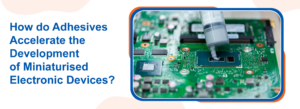
How do Adhesives Accelerate the Development of Miniaturised Electronic Devices?
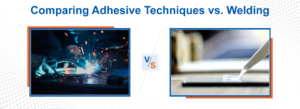
Comparing Adhesive Techniques vs. Welding
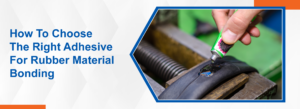
How To Choose The Right Adhesive For Rubber Material Bonding
